Maximize Your Results on PPC Networks with These Tips and Tricks for Mastering PPC Campaigns
Buy CPC Traffic | Buy Display Ads | Exclusive traffic sources | Buy Push Ads | Popunder ADS | Buy Native Ads | Buy Preroll Ads
Buy CPC Traffic | Buy Display Ads | Exclusive traffic sources | Buy Push Ads | Popunder ADS | Buy Native Ads | Buy Preroll Ads
In today's digital landscape, pay-per-click (PPC) campaigns have become an essential tool for businesses looking to maximize their online presence and drive targeted traffic to their websites. With the right strategies and techniques, businesses can significantly boost their visibility, increase brand awareness, and drive conversions.
However, mastering PPC campaigns requires a deep understanding of the intricacies of various PPC networks, such as Google Ads, Facebook Ads, and Bing Ads, as well as knowledge of best practices and strategies that can help you achieve the desired results. In this article, we will explore some tips and tricks that will help you unlock the full potential of your PPC campaigns and achieve maximum results.
1. Set Clear Goals and Define Your Target Audience: Before diving into the world of PPC advertising, it's crucial to clearly define your goals and identify your target audience. Are you looking to increase brand awareness, generate leads, or drive sales? Who is your ideal customer? By understanding your goals and target audience, you can create highly targeted campaigns that resonate with your audience and drive relevant traffic to your website.
2. Conduct Thorough Keyword Research: Keywords are the backbone of any successful PPC campaign. Carefully research and select relevant keywords that align with your goals and target audience. Utilize keyword research tools, such as Google Keyword Planner or SEMrush, to identify high-volume, low-competition keywords that can help you rank higher in search results and attract quality traffic to your website.
3. Craft Compelling Ad Copy: Your ad copy is what will entice users to click on your ads and visit your website, so it's essential to craft compelling and engaging copy. Use strong, action-oriented language, highlight unique selling points, and incorporate relevant keywords to optimize your ad copy for maximum impact. Experiment with different variations to see which ones resonate best with your audience and drive higher click-through rates.
4. Monitor and Analyze Your Campaign Performance: It's crucial to regularly monitor and analyze the performance of your PPC campaigns to identify areas that need improvement and optimize your strategies accordingly. Pay attention to key metrics such as click-through rates (CTR), conversion rates, and return on ad spend (ROAS) to gauge the effectiveness of your campaigns and make data-driven decisions.
5. Continuously Test and Optimize: PPC campaigns are a continuous process of testing, learning, and optimizing. Experiment with different ad formats, bidding strategies, and targeting options to find what works best for your business. A/B test different variations of your ads and landing pages to identify high-performing elements and continuously refine your campaigns for maximum results.
By implementing these tips and tricks, you can master the art of PPC campaigns and maximize your results on PPC networks, driving targeted traffic to your website and achieving your business goals.
Understanding PPC Networks
PPC networks, or pay-per-click networks, are online advertising platforms where advertisers can display their ads and only pay when a user clicks on their ad. These networks play a crucial role in digital marketing by providing a way for businesses to reach their target audience and promote their products or services.
There are several popular PPC networks, including Google AdWords, Bing Ads, and Facebook Ads. Each network has its own unique features and targeting options, allowing advertisers to customize their campaigns based on their specific goals and audience demographics.
When setting up a PPC campaign, it is important to have a good understanding of how these networks work and how to maximize your results. Here are a few key factors to consider:
Ad Relevance: PPC networks use algorithms to determine the relevancy of an ad to a user's search intent or browsing behavior. It is important to create ads that are highly relevant to your target keywords or audience to improve your ad's visibility and performance.
Bidding Strategy: PPC networks use bidding systems to determine the placement of ads. Understanding how to effectively bid on keywords and placements can help you achieve better ad positions and maximize your budget.
Targeting Options: PPC networks offer various targeting options, such as geographic targeting, demographic targeting, and interest-based targeting. Utilizing these options can help you reach your ideal audience and improve the performance of your campaigns.
Ad Copy and Design: Creating compelling ad copy and visually appealing designs can significantly impact the performance of your PPC campaigns. It is important to create ads that not only grab the attention of users but also convey the value proposition of your products or services.
Tracking and Analysis: PPC networks provide tools and analytics to track the performance of your campaigns. Regularly analyzing your data, such as click-through rates, conversion rates, and return on ad spend, can help you identify areas for improvement and optimize your campaigns for better results.
By understanding how PPC networks work and implementing effective strategies, you can maximize the results of your PPC campaigns and achieve your advertising goals.
Choosing the Right Keywords
When it comes to running successful PPC campaigns, choosing the right keywords is crucial. Keywords are the foundation of your campaign and play a significant role in determining its success. They are the words or phrases that users enter into search engines when looking for products or services similar to what you offer.
To choose the right keywords, it's important to understand your target audience and their search intent. Think about the specific terms or phrases they would use to find your products or services. Consider the words that are most likely to attract relevant traffic to your website.
1. Research and Analysis
Start by conducting thorough keyword research and analysis. Use tools like Google's Keyword Planner, SEMrush, or Moz's Keyword Explorer to find relevant keywords with high search volume and low competition. Look for long-tail keywords that are more specific and have a higher chance of converting into sales or leads.
Analyze the keywords used by your competitors and see which ones are performing well for them. This can give you insights into potential keywords that you may have missed. Pay attention to the keywords they are bidding on in their PPC campaigns and consider incorporating similar or related keywords into your own campaign.
2. Relevance and Specificity
Choose keywords that are highly relevant to your products or services. Avoid using generic or broad keywords that may attract irrelevant traffic. Instead, focus on specific keywords that accurately describe what you offer.
For example, if you are promoting an RTB advertising platform like TrafficStars, you might target keywords such as "RTB advertising platform", "real-time bidding platform", or "programmatic advertising network". These keywords are specific to your industry and more likely to attract users who are interested in your services.
Using long-tail keywords can also help you reach a more targeted audience. For example, instead of targeting "PPC advertising", you could target "PPC advertising for e-commerce businesses" or "PPC advertising for small businesses". These long-tail keywords have less competition and are likely to attract users with specific needs and interests.
Keep testing and optimizing your keywords
Choosing the right keywords is not a one-time task. It requires ongoing testing and optimization to ensure that you are targeting the most effective keywords for your campaign.
Continuously monitor the performance of your keywords and make adjustments as needed. Remove underperforming keywords and experiment with new ones to see which ones yield the best results. Test different variations of your keywords and track their performance to find the winning combinations.
Remember that PPC campaigns are dynamic, and what works today may not work tomorrow. Stay up to date with industry trends, monitor your competitors, and adapt your keyword strategy accordingly.
By selecting the right keywords and continually optimizing your campaign, you can maximize the results of your PPC campaigns and drive more traffic and conversions to your website.
Creating Compelling Ad Copy
The success of your PPC campaign largely depends on the quality of your ad copy. Therefore, creating compelling and attention-grabbing ad copy is crucial for engaging your target audience and driving conversions. Here are some tips to help you create effective ad copy:
1. Know Your Audience
Before writing your ad copy, it's essential to understand your target audience. Research their demographics, interests, needs, and pain points. This knowledge will help you tailor your ad copy to resonate with your audience, increasing the chances of conversion.
2. Highlight Unique Selling Points
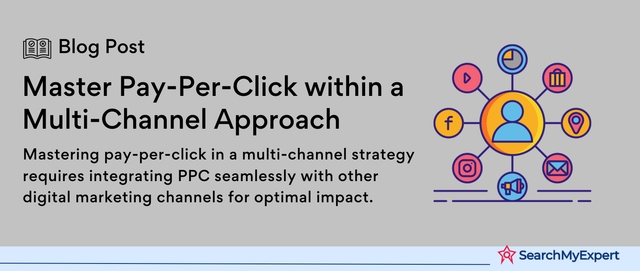
Identify the unique selling points (USPs) of your product or service and highlight them in your ad copy. What sets your offering apart from competitors? Conveying these USPs in a concise and compelling way will grab the attention of potential customers.
3. Use Action-Oriented Language
Use action-oriented language to encourage users to take the desired action. Incorporate strong verbs and phrases such as "buy now," "get started," or "learn more." This will create a sense of urgency and prompt users to click on your ad.
4. Experiment with Different Formats
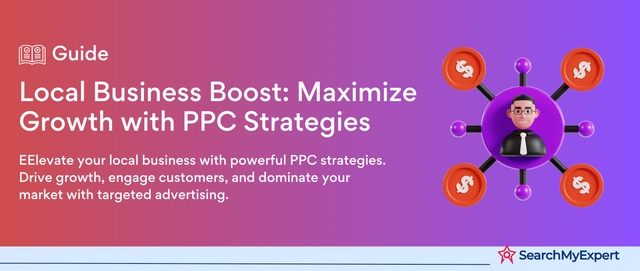
Try different ad copy formats, such as questions, statistics, or testimonials, to see what resonates best with your audience. A/B testing can help you identify the most effective messaging and refine your ad copy for better results.
5. Keep It Concise and Clear
Avoid long-winded and confusing ad copy. Keep your message concise, clear, and easy to understand. Use bullet points or numbered lists to break down information and make it more scannable for users.
6. Incorporate Keywords
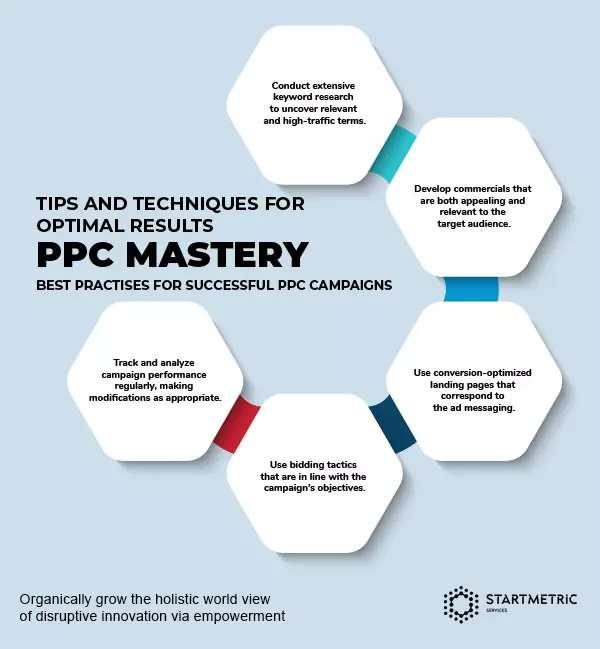
Integrate relevant keywords into your ad copy to improve its visibility and relevance. This will help your ads appear in searches that are most likely to convert. However, make sure not to overstuff keywords as it can negatively impact the readability and quality of your copy.
By following these tips, you can create compelling ad copy that captures the attention of your target audience and drives conversions. Remember to continually monitor and analyze your ad performance to make necessary tweaks and improvements. To learn more about maximizing the results of your PPC campaigns, consider utilizing rtb advertising for enhanced targeting and optimization.
Budgeting and Bidding Strategies

When it comes to running successful PPC campaigns, budgeting and bidding strategies are crucial aspects to consider. By effectively managing your budget and implementing smart bidding strategies, you can maximize your results and get the most out of your PPC networks. Here are some tips to help you master budgeting and bidding:
1. Determine Your Budget: Before starting a PPC campaign, it is important to define your budget. Consider factors such as your overall marketing goals, target audience, and the competitiveness of your industry. Setting a realistic budget will help you allocate your funds effectively.
2. Monitor and Adjust: Once your campaign is up and running, it is essential to monitor and adjust your budget regularly. Keep an eye on your campaign performance and make adjustments as needed. If a particular ad or keyword is not performing well, consider reallocating the budget to better-performing areas.
3. Use Bid Adjustments: Take advantage of bid adjustments to optimize your bidding strategy. Bid adjustments allow you to increase or decrease your bids based on factors such as device, location, or time of day. Analyze your campaign data to identify areas where bid adjustments can help maximize your ROI.
4. Experiment with Bidding Strategies: It's important to experiment with different bidding strategies to find what works best for your campaign. Consider testing manual bidding, automated bidding, or a combination of both. Keep track of the results and adjust your bidding strategy accordingly.
5. Leverage Ad Scheduling: Ad scheduling allows you to specify the days and times your ads will be shown. Use this feature strategically to target your audience when they are most likely to convert. Adjust your bids accordingly to maximize your visibility during peak times.
6. Focus on Quality Score: Quality Score plays a vital role in the success of your PPC campaigns. Aim to improve your Quality Score by optimizing your ad relevancy, landing pages, and targeting. A higher Quality Score can positively impact your ad rank and lower your cost per click.
7. Keep an Eye on Competitors: Monitor your competitors' bidding strategies and adjust yours accordingly. Analyze their ad copy, keywords, and landing pages to gain insights and stay competitive. Stay proactive and make timely adjustments to stay ahead in the PPC game.
By implementing these budgeting and bidding strategies, you can optimize your PPC campaigns, drive more targeted traffic to your website, and achieve greater ROI from your PPC networks.
Tracking and Analyzing Performance
Tracking and analyzing the performance of your PPC campaigns is crucial for maximizing your results. By closely monitoring your campaign metrics, you can identify areas of improvement and make data-driven decisions to optimize your campaigns.
1. Set up Conversion Tracking: Implement conversion tracking to measure the actions users take on your website after clicking on your PPC ads. This will provide valuable insights into which keywords, ads, and landing pages are driving the most conversions.
2. Track Key Performance Indicators (KPIs): Define and monitor KPIs that align with your campaign goals. Common KPIs include click-through rate (CTR), conversion rate, cost per conversion, and return on ad spend (ROAS).
3. Analyze Audience Data: Understand your target audience by analyzing demographic, geographic, and device data. This information can help you optimize your ad targeting and bidding strategies to reach the most relevant users.
4. Use A/B Testing: Test different ad copies, keywords, and landing pages to identify which variations perform the best. A/B testing can help you optimize your campaigns by making data-backed decisions and improve your overall campaign performance.
5. Leverage Analytics Tools: Utilize analytics platforms like Google Analytics to gain deep insights into your campaign performance. These tools provide comprehensive reports and data visualization, allowing you to track performance trends over time.
6. Monitor Competitors: Keep an eye on your competitors' PPC campaigns to identify their strategies and gain a competitive edge. Analyze their ad copy, keywords, and landing pages to find opportunities for improvement in your own campaigns.
7. Regularly Review and Optimize: Continuously review your campaign performance metrics and make necessary optimizations. Adjust your bids, ad placements, and targeting settings based on the data to maximize your campaign's effectiveness.
By effectively tracking and analyzing your PPC campaign's performance, you can make data-driven decisions to optimize your campaigns and achieve better ROI. Regular monitoring and optimization are key to success in the ever-evolving world of PPC advertising.
Optimizing Landing Pages

When it comes to running successful PPC campaigns, having optimized landing pages is crucial. A landing page is the first page a visitor sees after clicking on your ad, and it plays a significant role in determining whether they will convert or bounce. Here are some tips and tricks for optimizing your landing pages:
1. Clear and concise messaging:
Make sure your landing page clearly conveys what your offer is and how it benefits the visitor. Use persuasive copywriting techniques to capture their attention and make them want to take action.
2. Relevant and targeted content:
Align the content on your landing page with the keywords and ad text that brought the visitor to the page. This will help improve relevance and increase the chances of conversion.
3. Strong call-to-action:
Have a prominent and visually appealing call-to-action on your landing page that clearly tells visitors what to do next. Use contrasting colors and compelling language to grab their attention.
4. Mobile optimization:
Ensure that your landing page is mobile-friendly and loads quickly on mobile devices. Mobile traffic is increasing, and having a responsive design will improve the user experience and conversions.
5. A/B testing:
Test different elements on your landing page, such as headlines, images, and forms, to see which combination performs the best. Use data-driven insights to make informed decisions and optimize for better results.
6. Trust signals and social proof:
Include trust elements, such as customer testimonials, reviews, and trust badges, to build credibility and trust with your visitors. This can help overcome any doubts or hesitations they may have.
By following these optimization techniques, you can create landing pages that are not only visually appealing but also effective in converting visitors into customers. Remember, landing pages are an essential part of your rtb advertising strategy, so invest time and effort in creating and optimizing them for maximum results.
Expanding Reach with Remarketing
Remarketing is a powerful tool that allows advertisers to target and engage with users who have previously interacted with their website or mobile app. By presenting relevant ads to these users as they browse other websites or apps, remarketing can help increase brand awareness, drive conversions, and maximize the return on investment (ROI) of your PPC campaigns.
To effectively expand your reach with remarketing, follow these tips and best practices:
1. Define your remarketing goals
Before diving into a remarketing campaign, it's important to clearly define your goals. Are you looking to increase sales, generate leads, or simply increase brand exposure? Knowing your objectives will help guide your remarketing strategy and ensure you create relevant and compelling ads.
2. Segment your audience
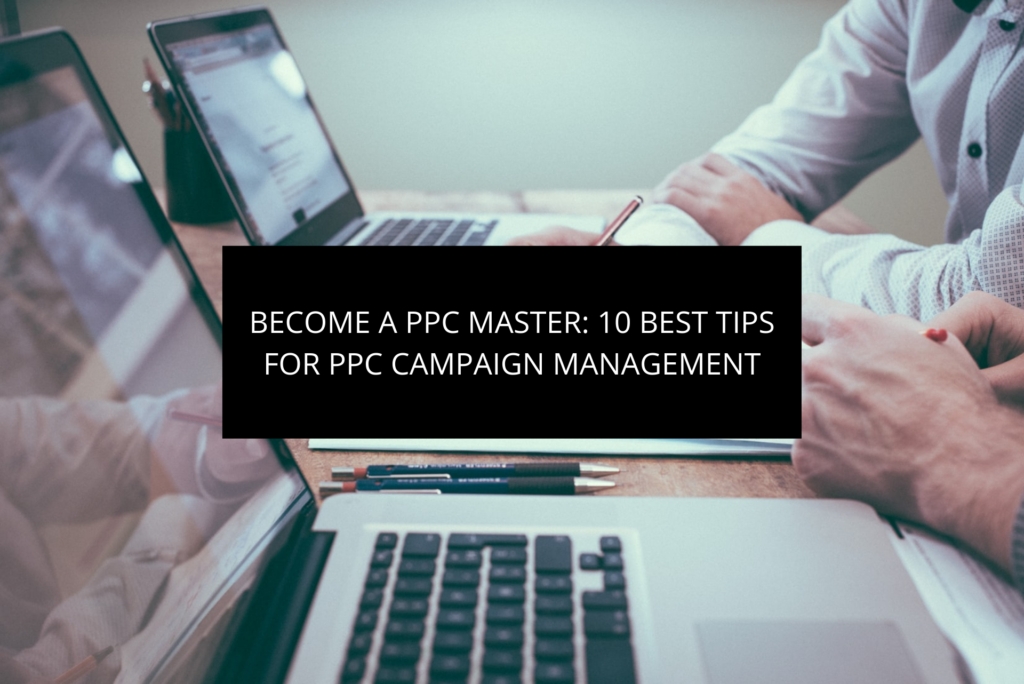
Segmenting your audience allows you to create personalized and targeted remarketing ads. Consider segmenting based on specific actions users have taken on your website, such as product views, cart abandonments, or newsletter sign-ups. By tailoring your ads to specific segments, you can deliver more relevant messaging that resonates with your audience.
3. Use dynamic remarketing ads
Dynamic remarketing ads take personalization to the next level by dynamically generating ads that feature products or services that users have previously viewed or shown interest in. By displaying these highly relevant ads, you can re-engage users and remind them of items they were interested in, increasing the likelihood of conversion.
4. Exclude converters from your remarketing lists
Once a user converts, it's often not necessary to continue remarketing to them. Exclude converted users from your remarketing lists to avoid bombarding them with ads for products or services they have already purchased. Instead, focus your efforts on reaching new potential customers.
5. Test different ad formats and placements
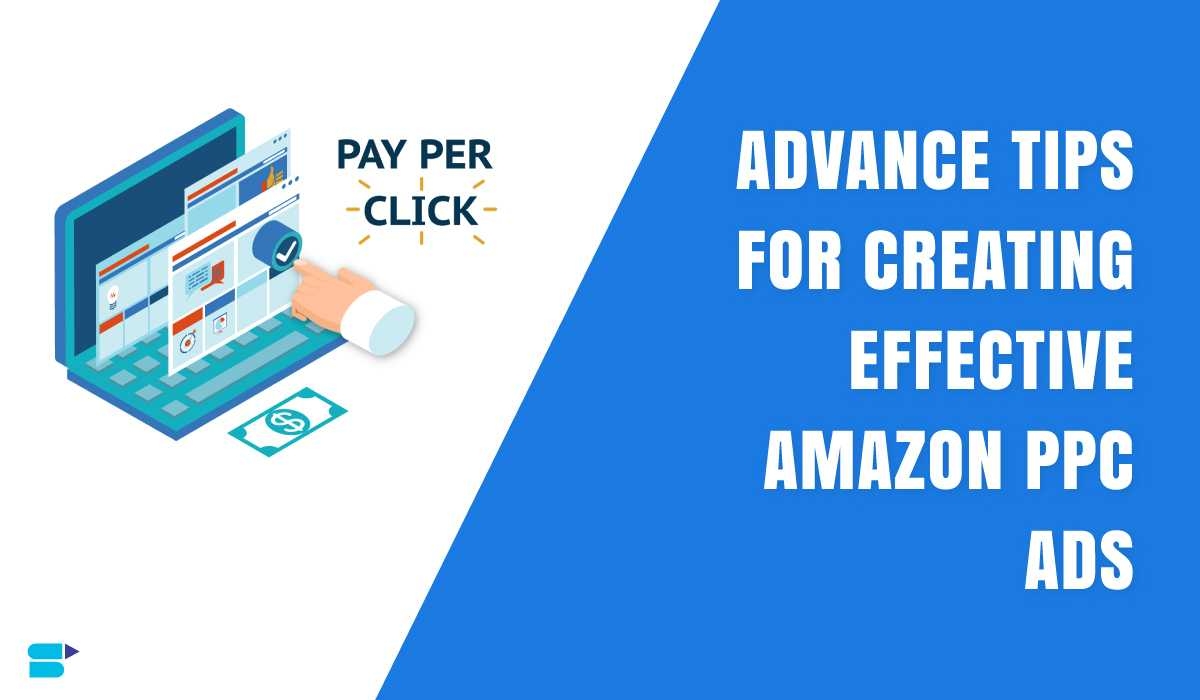
Experiment with different ad formats and placements to optimize the performance of your remarketing campaigns. Test static image ads, video ads, and responsive ads to see what works best for your audience. Additionally, try different ad placements across various websites and apps to reach users in the most effective and engaging way.
In conclusion, remarketing can be a highly effective strategy for expanding your reach and driving results on PPC networks. By setting clear goals, segmenting your audience, utilizing dynamic ads, excluding converters, and testing different ad formats and placements, you can maximize the impact of your remarketing campaigns and ultimately achieve your advertising objectives.
What is a PPC campaign?
A PPC campaign, or pay-per-click campaign, is an online advertising model where advertisers pay each time a user clicks on their ads. It is a way to drive traffic to websites and increase brand visibility.
How can I maximize the results of my PPC campaigns?
There are several strategies you can use to maximize the results of your PPC campaigns. First, make sure your keywords are relevant and targeted. Second, optimize your ad copy to be compelling and enticing. Third, monitor and analyze your campaign data regularly to identify areas for improvement. Lastly, test different variations of your ads to see what works best.
Is it better to focus on Google Ads or other PPC networks?
Google Ads is the most popular and widely used PPC network, but it's not the only option. The choice of which PPC network to focus on depends on your specific goals and target audience. If you want to reach a broad audience, Google Ads is likely the best choice. However, if you have a niche product or target a specific demographic, other PPC networks may provide better results.
What are some common mistakes to avoid when running a PPC campaign?
There are several common mistakes to avoid when running a PPC campaign. First, not conducting thorough keyword research can result in targeting the wrong audience. Second, setting an unrealistic budget can quickly deplete your funds. Third, neglecting to monitor and optimize your campaign regularly can lead to missed opportunities for improvement. Lastly, not having clear and compelling ad copy can result in low click-through rates.
How can I track the success of my PPC campaigns?
Tracking the success of your PPC campaigns is essential to measure your return on investment (ROI). You can use tracking tools provided by the PPC network, such as Google Analytics, to monitor key metrics like click-through rate, conversion rate, and cost per acquisition. Additionally, setting up conversion tracking and using unique URLs for each ad can help you track the specific actions users take after clicking on your ads.
What are some tips for maximizing results on PPC networks?
Some tips for maximizing results on PPC networks include conducting keyword research, targeting the right audience, creating compelling ad copy, optimizing landing pages, monitoring and analyzing performance, and constantly testing and refining your campaigns.
How can I optimize my landing pages for better results?
To optimize your landing pages for better results on PPC campaigns, you can focus on improving the page load speed, making the call-to-action clear and prominent, ensuring mobile responsiveness, testing different headline and ad copy variations, using high-quality and relevant images, and offering a valuable and compelling offer.
Buy CPC Traffic | Buy Display Ads | Exclusive traffic sources | Buy Push Ads | Popunder ADS | Buy Native Ads | Buy Preroll Ads
2022-2024 @ Mastering PPC Campaigns: Tips and Tricks for Maximizing Results on PPC Networks